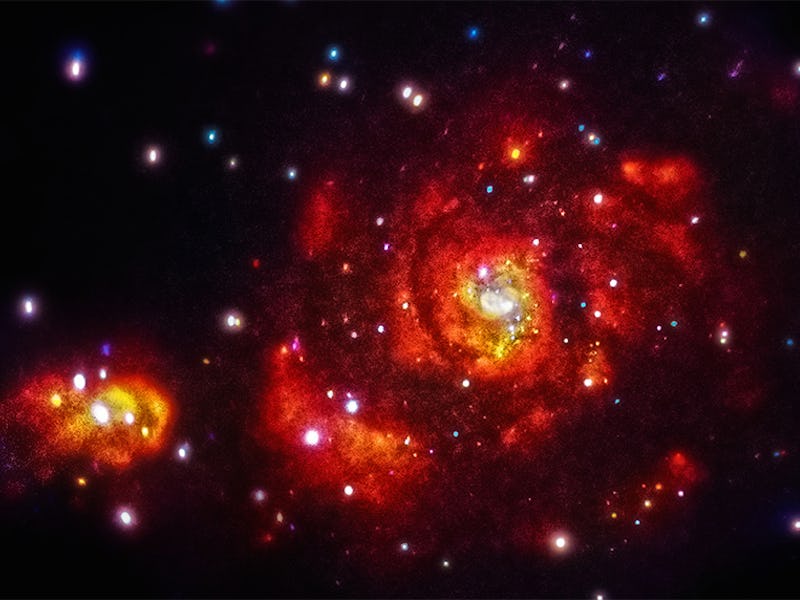A Supermassive Black Hole Is Burping Up Blasts of Space Gas
After a big meal of nearby stars and gas, this black hole is experiencing serious indigestion.

Some 26 million light-years away, a supermassive black hole in the middle of two colliding galaxies is burping up violent blasts of hydrogen gas, according to data released today.
The evidence for these powerful galactic belches comes by way of new data from NASA’s Chandra X-ray Observatory. The black hole, located within the small galaxy NGC 5195, is one of the closest to Earth. It’s thought to be burping up gas after a “meal” of nearby stars and gas, as study leader Eric Schlegel, Ph.D., put it in a release.
Using the Chandra data, Schlegel’s team detected two arcs of X-ray emissions close to the center of the galaxy, formed separately between one and six million years ago. They’re thought to represent “fossils” — they are, after all, several million light-years away — of the enormous blasts of material expelled outward from the black hole.
An artist illustration of the Chandra X-ray Observatory. Chandra is the most sensitive X-ray telescope ever built.
A small region of relatively cool hydrogen gas surrounding the hotter, outer arc is thought to be evidence that the lower-temperature gas was “snow-plowed” out by the hot material at the center of NGC 5195. It’s thought that enough material has been plowed out of the system by the black hole to trigger the formation of new stars.
This sort of black hole-galaxy interaction is referred to as “feedback,” which study co-author Marie Machacek, Ph.D., suggests is a mechanism that keeps galaxies from getting too large but also provides evidence that hungry black holes can, in fact, create new bodies.
In this case, the collision of NGC 5195 with a larger, spiraling neighbor galaxy is thought to have fed gas into the black hole, triggering the interstellar burps.
Evidence of the feedback process occurring at the intermediate stage gives us a glimpse of what mechanisms might have been at play during the formation of the early universe and the evolution of galaxies.